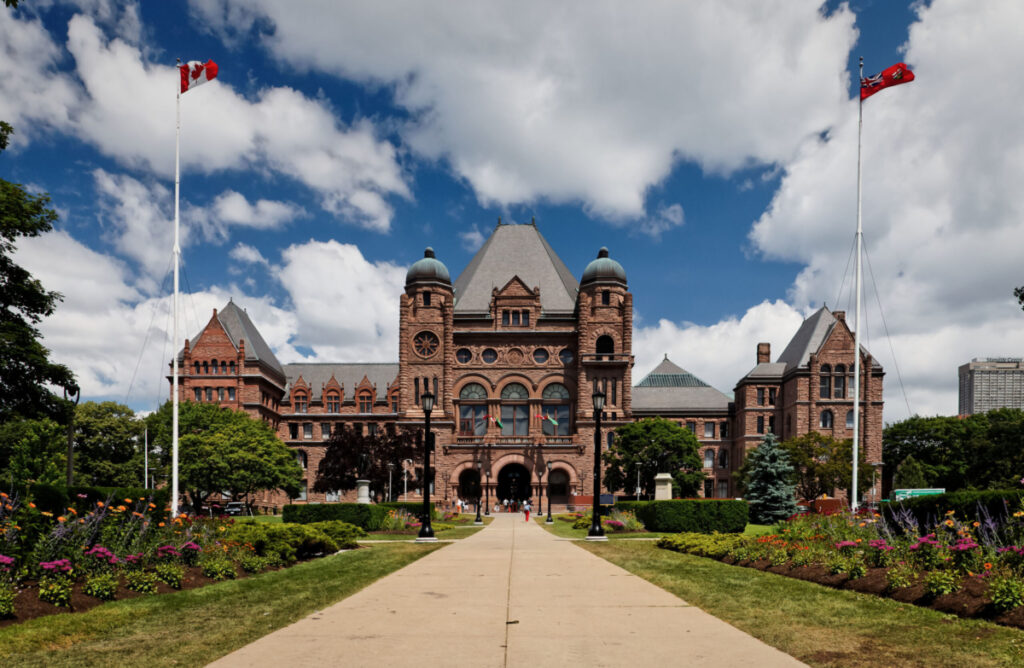
Premier Doug Ford said Monday he would rescind recent legislation that utilizes the notwithstanding clause if CUPE education workers cease the strike and return to the bargaining table.
This walks back Bill 28, passed by the Ford government on Nov. 3, requiring any strike or lock-out to be terminated and further prohibiting strikes and lock-outs during the term of collective agreement. The legislation included the notwithstanding clause to override certain sections of Canada’s Charter of Rights and Freedoms (part of Canada’s constitution).
Under section 1 of the Charter, however, rights and freedoms “are not absolute” and they come with exceptions. For example, despite Canadians’ fundamental freedom of expression, this freedom does not include hate speech or slander.
Under section 2 of Canada’s Charter, everyone has the fundamental freedom of association. In this case, it would have covered workers who want to strike.
The Charter, however, also has section 33, commonly known as the notwithstanding clause. Invoking section 33 to any law means the federal, provincial and territorial levels of government can detract from certain sections of the Charter when making laws.
The origins of the notwithstanding clause
The idea of a charter didn’t get a lot of traction until the 1980s, when Prime Minister Pierre Trudeau pushed it through, says Geoffrey Callaghan, assistant professor of political science at the University of Windsor.
Up until this time, provinces enjoyed parliamentary supremacy — similar to the United Kingdom, says Callaghan. In other words, it meant parliament had authority over lawmaking. Once the Charter was introduced authority over lawmaking could be shifted to the courts or judiciary.
Many provinces didn’t want a document that would transfer lawmaking powers to the courts. Section 33, the notwithstanding clause, was introduced as, some would say, a compromise to get provinces on board with the Charter, says Callaghan. Finally, the Charter was enforced by Trudeau in 1982.
He added that the clause was put in to ensure the judiciary wouldn’t have too much of a role in provincial or federal law making. It could be added to legislation to ensure the law operates regardless of certain charter violations that have been declared by a court — in other words, to override them. The sections of the charter that could be overridden were fundamental freedoms, legal rights and equality rights.
Its Usage
The notwithstanding clause can be used at the federal, provincial, or territorial levels of government, and has been used in the past — though never federally.
- Bill 21 in 2019, which banned religious symbols for public servants
- Bill 96, which enshrined French as Quebec’s official language in 2022
- 1986 to enact back-to-work legislation for Saskatchewan Government Employees Union (SGEU) after a series of rolling strikes that lasted months. Though, upon appeal, the Supreme Court of Canada found that the legislation did not violate the Charter, so the use of the notwithstanding clause was unnecessary.
- In 2017 to uphold funding for students to attend either public or Catholic schools, regardless of religious affiliation
Until Ford, no Ontario premier used the notwithstanding clause. He first threatened to use it in 2018 to cut Toronto council in half. However, a high court ruled that the legislation was constitutional so it wasn’t required. In 2021, the Ford government used the provision for the first time to limit third-party advertising and spending in the run-up to elections. This is his second use of the clause.
With files from Tyrese Wedderburn.
Managing editor, On The Record, Fall 2022.

